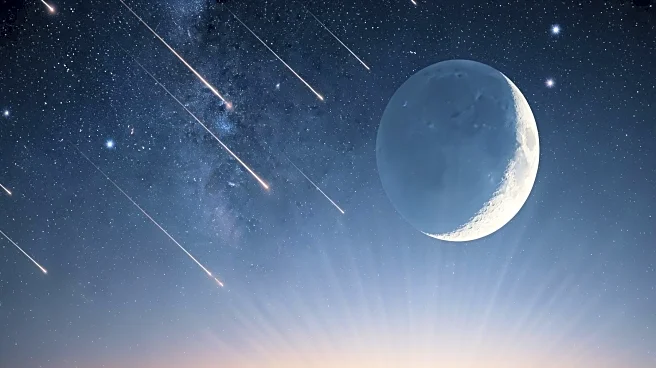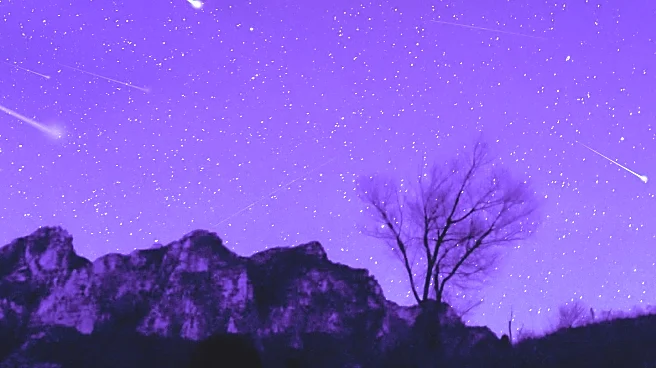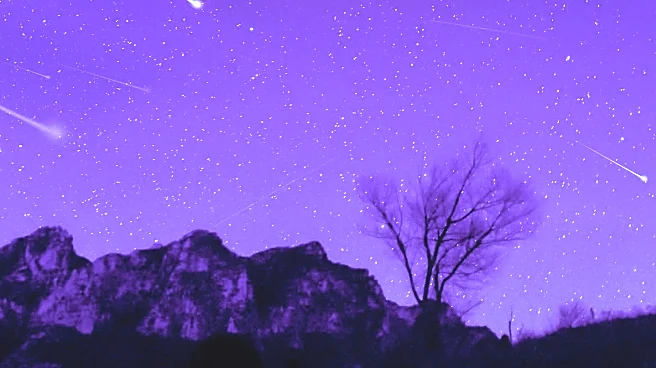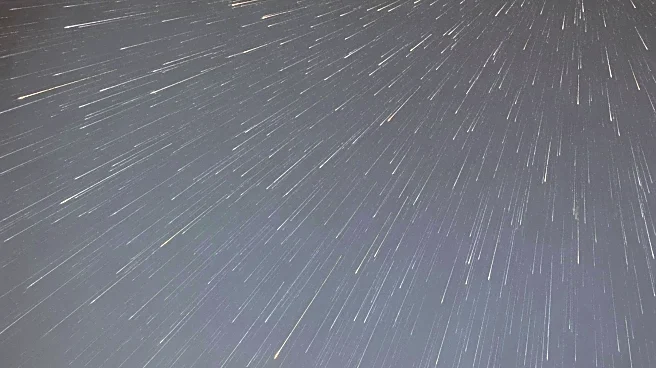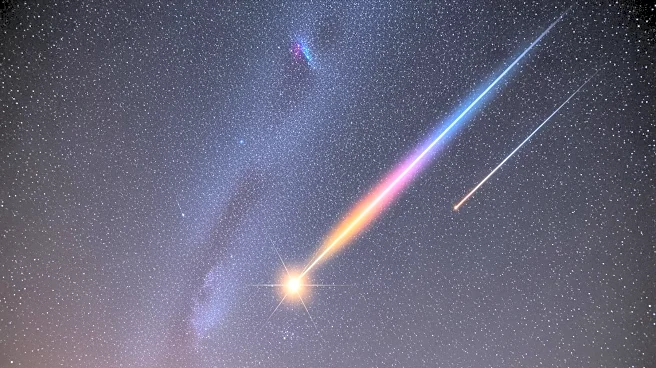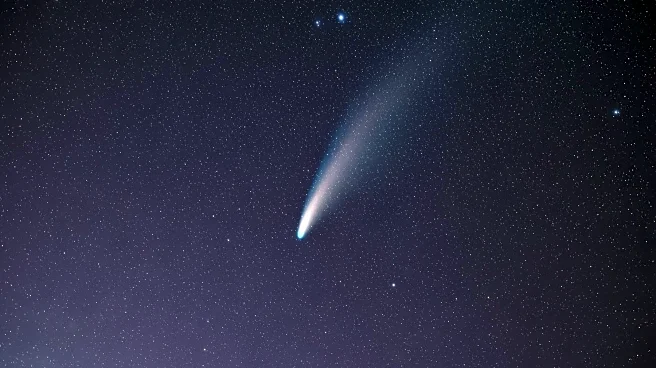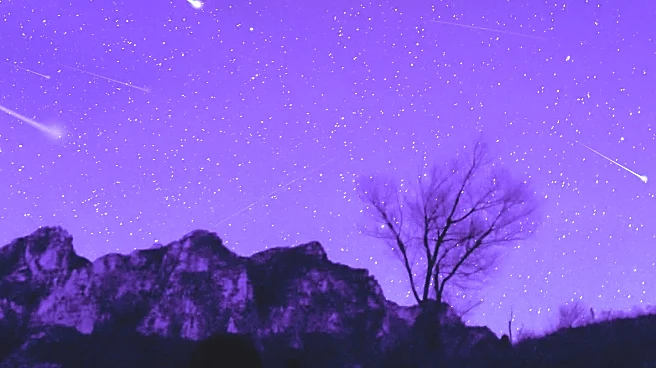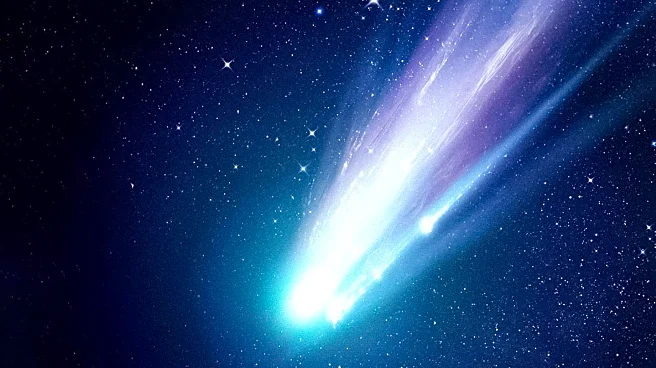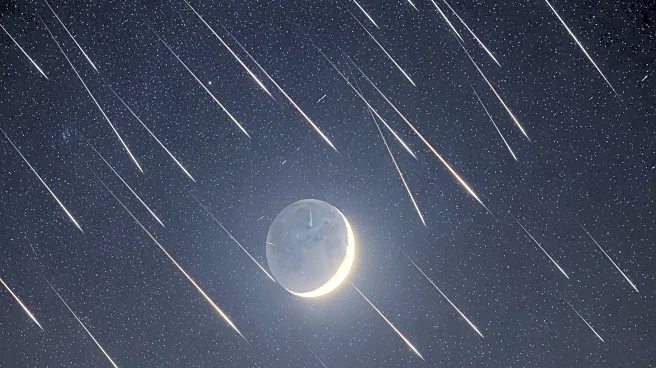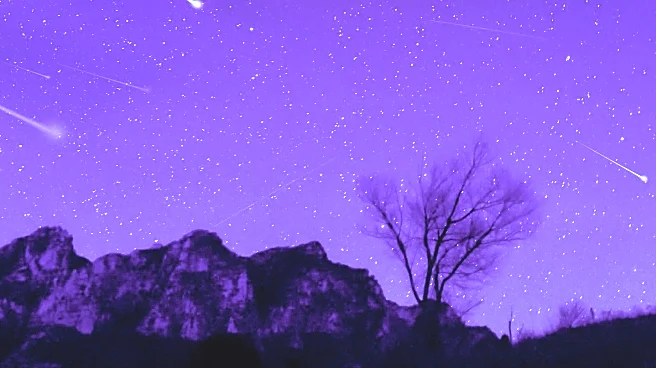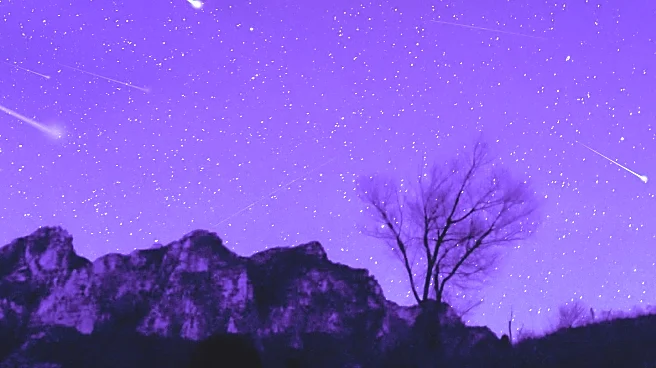What's Happening?
The Orionid meteor shower, an annual event caused by debris from Halley's Comet, is peaking on the night of October 21-22, 2025. This year, the peak coincides with a New Moon, providing ideal dark sky
conditions for viewing. The Orionids are known for their bright meteors, which can be seen without any special equipment. Under optimal conditions, observers might see 10 to 20 meteors per hour. The shower is visible throughout October and into November, with the best viewing times after midnight when meteors appear higher in the sky.
Why It's Important?
Meteor showers like the Orionids offer a natural spectacle that can be enjoyed by people of all ages and backgrounds, fostering a sense of wonder and curiosity about the universe. The event provides an opportunity for educational activities and public engagement in astronomy, encouraging people to learn more about celestial phenomena. The timing with the New Moon enhances visibility, making it an excellent occasion for both amateur stargazers and professional astronomers to observe and document the event. Such events can also promote tourism in areas with clear, dark skies.
What's Next?
Observers are advised to find locations away from urban light pollution to maximize their viewing experience. The Orionids will continue to be visible in the coming days, offering multiple opportunities for observation. Stargazers should allow their eyes to adjust to the darkness and avoid looking at bright lights, including phone screens, to enhance their ability to see the meteors. The event also serves as a reminder of Halley's Comet, which will next be visible from Earth in 2061, sparking interest in future astronomical events.
